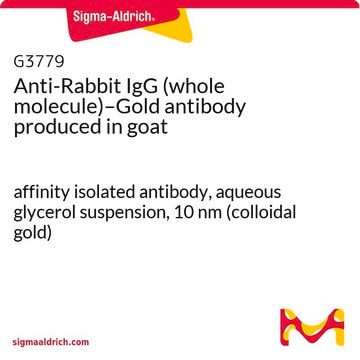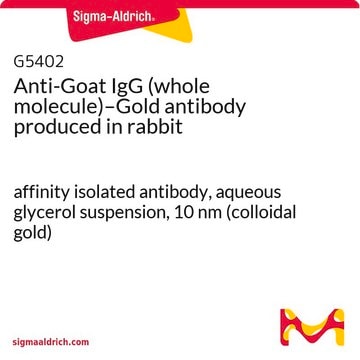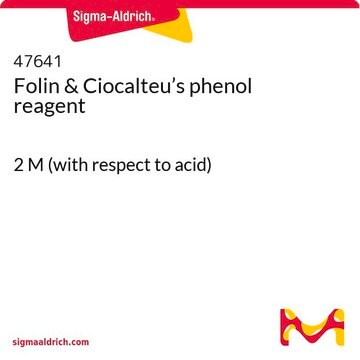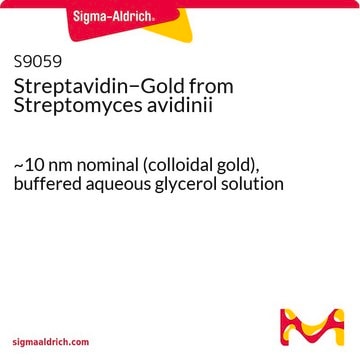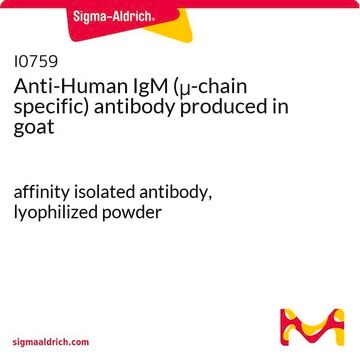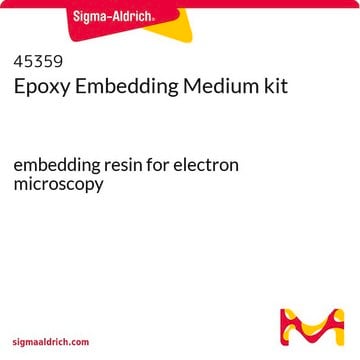G7277
Anti-Rabbit IgG (whole molecule)−Gold antibody produced in goat
affinity isolated antibody, aqueous glycerol suspension, 5 nm (colloidal gold)
Sinonimo/i:
Goat Anti-Rabbit IgG
About This Item
Prodotti consigliati
Origine biologica
goat
Coniugato
gold conjugate
Forma dell’anticorpo
affinity isolated antibody
Tipo di anticorpo
secondary antibodies
Clone
polyclonal
Forma fisica
aqueous glycerol suspension
tecniche
dot blot: suitable
western blot: suitable
Dimensione particelle
5 nm (colloidal gold)
Temperatura di conservazione
2-8°C
modifica post-traduzionali bersaglio
unmodified
Categorie correlate
Descrizione generale
Immunogold labeling is a technique whereing antibodies, especially secondary antibodies, are labeled with colloidal gold. These gold conjugated antibodies generate electron dense particles that are visable using electron microscopy.
Applicazioni
Azioni biochim/fisiol
Altre note
Stato fisico
Esclusione di responsabilità
Not finding the right product?
Try our Motore di ricerca dei prodotti.
Codice della classe di stoccaggio
10 - Combustible liquids
Classe di pericolosità dell'acqua (WGK)
WGK 3
Punto d’infiammabilità (°F)
Not applicable
Punto d’infiammabilità (°C)
Not applicable
Dispositivi di protezione individuale
Eyeshields, Gloves, multi-purpose combination respirator cartridge (US)
Certificati d'analisi (COA)
Cerca il Certificati d'analisi (COA) digitando il numero di lotto/batch corrispondente. I numeri di lotto o di batch sono stampati sull'etichetta dei prodotti dopo la parola ‘Lotto’ o ‘Batch’.
Possiedi già questo prodotto?
I documenti relativi ai prodotti acquistati recentemente sono disponibili nell’Archivio dei documenti.
I clienti hanno visto anche
Il team dei nostri ricercatori vanta grande esperienza in tutte le aree della ricerca quali Life Science, scienza dei materiali, sintesi chimica, cromatografia, discipline analitiche, ecc..
Contatta l'Assistenza Tecnica.


